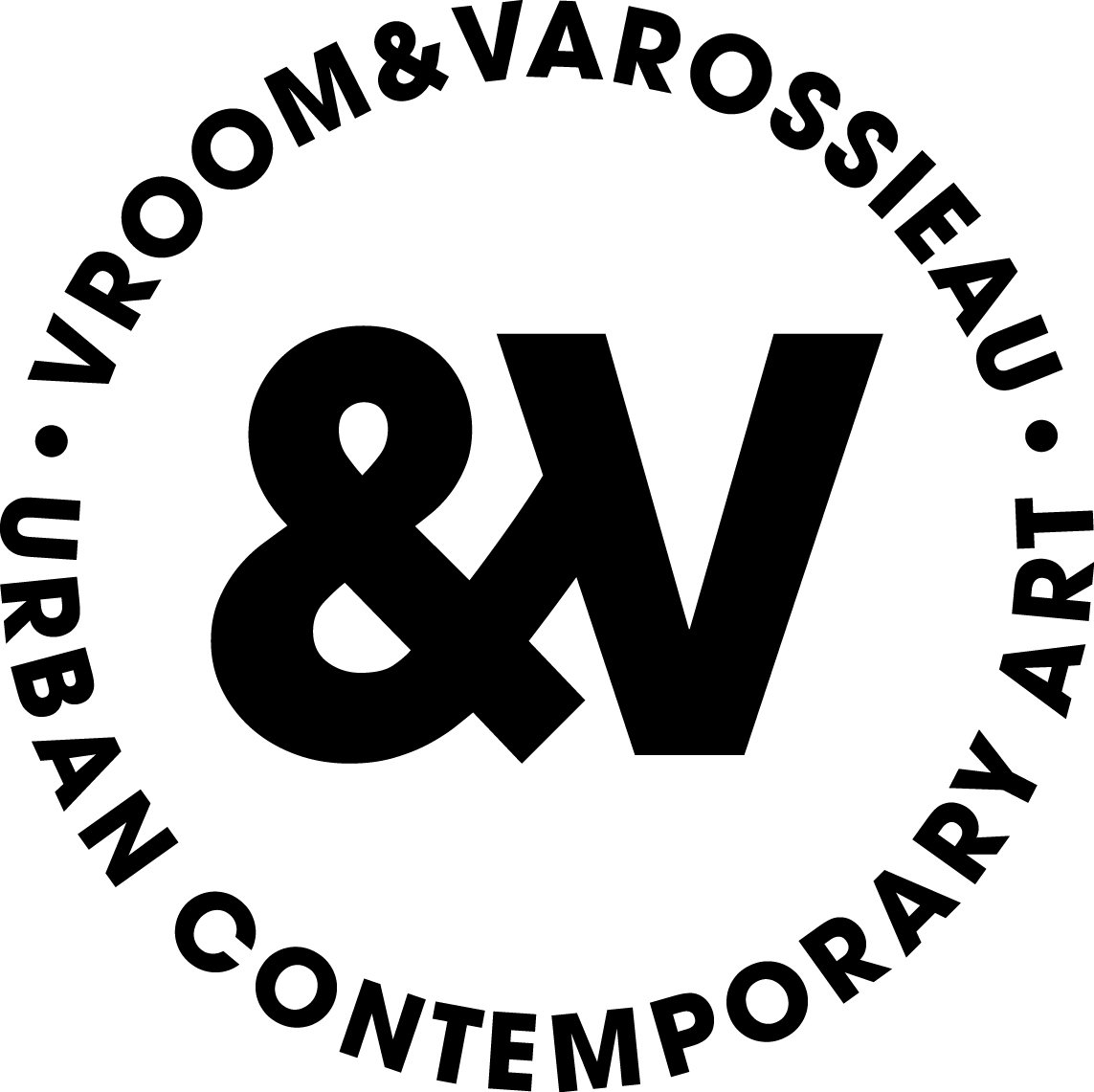Interview with EGS
EGS (1974, Helsinki) has been pivotal in the historical research and dissemination of the graffiti practice itself: an artist-archivist spurred by an intense desire to explore both the formal and folkloric truths of graffiti, to uncover its deeply social and material foundations. We recently had a chat with him about the ideas behind his work, the creative process and future projects. From the 8th to the 12th of February 2023, Vroom and Varossieau will represent EGS at Art Rotterdam, in the outstanding UNESCO-listed building of the Van Nellefabriek in Rotterdam.
Ideas/Creative Process
In a previous interview published in your book “Egs Writing Stories With Three Letters” you stated that ideas often arise as a mix of reflection upon graffiti, everyday life and society. How do you combine these energies into a painting or a glass sculpture?
EGS: I have been painting the letters E,G,S for over thirty years, it has become my alphabet. Whatever I want to express, from reading books or following news, translates in three signs. I always start from a conceptual idea and gradually work on its transposition in letters. The thinking process can be quite long, while the execution itself - as in graffiti - is really powerful and dynamic.
EGS,HIBERNATING REBELLION 1,Hand blown glass sculptures (2022) ca. 23x20x20cm /ca. 28x19x19cm /ca. 25x15x16cm
The cultural movements of Situationism and Arte Povera are significant references in your work. The Si was pivotal for urban art as we know it today - members of the Si were the one of the first to use graffiti by means of short and compelling statements. Regarding Arte Povera, how do you relate your work to this experience?
EGS: It was a movement that was imposing itself against the bourgeois art world. Arte Povera was challenging the system also throughout the exploration of a wide range of materials, beyond the traditional ones. I think this is a common path with the graffiti world and my artistic practice. I also like the idea of bringing my pieces with its own materials and roughness in an institutional space.
The formal element of the line is crucial in your work. Physical and mental at the same time, you mostly embrace the use of black. What does it mean to you?
EGS: When I started to do graffiti I was first doing tags like everyone. I often heard public talking that they preferred colourful paintings over tags. I wanted to research the raw and minimal aesthetics of tags. Hence I work a lot with with black. I mostly use syringes to draw lines. Via this technique, the line results really unique. It is sophisticated and vibrant in the same time. From a conceptual perspective, the black lines represent to me alleys, dark paths where the art of graffiti is often created.
EGS,INTERNATIONAL PENPALS 18,Ink, charcoal, and spray paint on canvas ca. 125 x 160 cm, 2022
World maps
Stylised world maps are really present in your artistic practice, in which the three letters of your name are merged with geography. What is the next step for the maps?
EGS: It could be to draw maps of the future in various declinations of the world. Since I was a kid, I have been always fascinated by old maps. Colonialism, immigration, social and political events influence my work. On the occasion of Art Rotterdam, I will show the series of paintings The Last Clouds. They can be related to the climate crisis: if the clouds system mutates consequently everything changes as it is. For me the clouds can be also interpreted as the last ones, perhaps a better tomorrow will come. Many different interpretations can arise from such a universally present imagery as the map of the world, all stories for me are equally correct.
EGS, THE LAST CLOUDS 3,Ink, oil and spray paint on canvas ca. 125 x 160 cm, 2022



